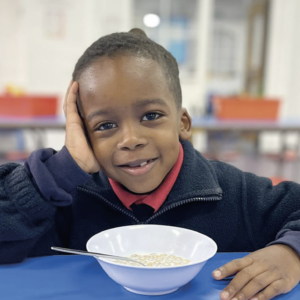“Make sure you’re drinking enough water”
We’ve all heard it before – from our parents, teachers, sports coach, doctor – especially during the warmer weather. And if you’re a parent yourself, you may hear yourself regularly reminding your child to drink more often.
But why is staying hydrated so important?
When you consider that the human body is made up of approximately 60% water, it gives us a clue as to how important it is to maintain our fluid levels. Even more astonishing is that particular body parts contain even higher percentages of water. For example, some of our most vital organs – the brain, heart, lungs and kidneys – are made up of roughly 80% water. So, in order for them to work efficiently, we need to hydrate the whole body.
Fluids are also essential for:
- protecting the spinal cord (the signal pathway to the brain)
- removing waste via sweat and urine
- maintaining healthy digestion
- regulating body temperature
- keeping muscles and joints supple
If our fluid levels drop only slightly, we can start to feel the effects of dehydration. Headaches, fatigue, dizziness and poor concentration are just some of the signs your body needs more water.
But by the time we feel symptoms of thirst – dry mouth, sore throat, brain fog – our body is already dehydrated. So, the best approach to staying hydrated is to drink little and often throughout the day, even if you don’t feel immediately thirsty. A visual way to see if you’re getting enough liquid in your diet is to check the colour of your urine; ideally, it will be a pale straw colour or clear. If it’s a darker, amber colour, this is a sign that you need to drink more.
The amount of fluid needed varies from person to person, depending on age, gender, climate and activity levels. In the UK, the general advice for children is to consume six to eight 200ml glasses of water or other sugar-free liquid a day (a minimum of 1,200 ml). In warmer weather and with increased activity, more fluids are needed to avoid dehydration. This is on top of the fluid obtained from foods, which should account for 20 – 30% of total water intake. The British Dietetic Association recommends that adolescents and adults consume a higher daily amount – up to 2,000 ml of fluids after food intake.
Interestingly, studies suggest that children who develop healthy drinking habits and hydrate before learning tasks show better cognitive performance, especially during memory tasks and visual attention activities.[1][2]
Happy Hydration Habits
As children prepare to head back to school, it is vital to instill positive drinking habits in the school environment from Day One. This not only applies to how much children drink, but what they drink. Fresh drinking water is the number one choice as it does an excellent job of hydrating the body, while containing no calories, sugar, fat or additives. However, other forms of liquid count towards your daily intake, including:
- Milk
- Sparkling water (unflavoured)
- Fruit juice (limited to 150ml per day due to high sugar content)
- Sugar-free hot drinks such as herbal teas (caffeinated drinks not advised for primary aged children)
Foods such as watermelon, cucumber, courgettes, tomatoes and lettuce contain approximately 90% water, so adding these foods into your daily diet can also boost fluid intake.
It is important to limit or even cut out drinks with added sugar such as squash, fizzy drinks (except sparkling water), energy drinks and flavoured milks, as they can be a major contributor to obesity and dental problems. Sports drinks, energy drinks and tea or coffee are not recommended for children as they may contain caffeine and other stimulants, which can interfere with energy levels and learning behaviour.
What can you do to make sure your child drinks enough water throughout the day?
- Ensure your child has a water bottle packed in their school bag ready to go in the morning. Transparent bottles are the best as children can see how much they are drinking throughout the day.
- Not a fan of plain water? Try adding a few slices of juicy fruit to the bottle and keep in the fridge overnight. This will infuse the water with natural fruit flavours, without adding the sugar content of squash or pure juice. Citrus fruits like lemon, lime or orange are refreshing, while strawberries add a little extra sweetness.
- During warm weather, iced drinks can be a fun and appealing way to encourage young learners to hydrate. Pop a water bottle in the freezer overnight (with slices of fruit for added appeal), and as the drink melts throughout the day, children can access fluids whilst keeping cool.
- Fresh drinking water should be available throughout the school day – either from a tap, jug or water fountain. Make sure your child knows where and when they can access this water source. Break times and lunch times provide the perfect opportunity to re-hydrate before the next activities of the school day.
- Check your child’s school drinking policy – whether they allow drinks bottles on desks, or they have a ‘hydration station’ that children can access at certain times. One common reason for children not drinking in school is that they can feel anxious asking to go to the toilet frequently, but this shouldn’t stop anyone from getting the fluids they need. Speak to your child’s teacher if you are concerned about any drinking and toilet related issues.
- If your child forgets to drink (and this is a common problem in young children), try incentives like placing rubber bands or markers on a clear drink’s bottle, so they can see how much they have had. If the bottle has measurements marked on it, you could challenge them to drink a certain amount by a certain time (e.g. 500ml or the ‘green line’ by lunchtime, refill and empty again by the end of the day).
- Younger children may respond well to charts which track their ‘drinking progress’, perhaps using stickers or bright colours to signal when they have hit certain targets.
- It is a requirement that water is served with school lunches and is also available at breakfast or after school clubs. Including a drink with a meal is part of the Eat Well guide, and teaches children that liquids are an important part of a healthy diet.
In summary, staying hydrated is vital to our physical and mental health, allowing our bodies to function properly and our minds to take in and process what we want to learn. For children, developing positive drinking habits starts with the behaviour they practice at home, and continues into the classroom where opportunities for learning are enhanced by maintaining optimum fluid levels throughout the school day.
[1] Water Consumption during a School Day and Children’s Short-Term Cognitive Performance: The CogniDROP Randomized Intervention Trial. Nutrients. 2020 May; 12(5): 1297
[2] Does having a drink help you think? 6–7-Year-old children show improvements in cognitive performance from baseline to test after having a drink of water. Appetite Volume 53, Issue 3, December 2009, Pages 469-472






